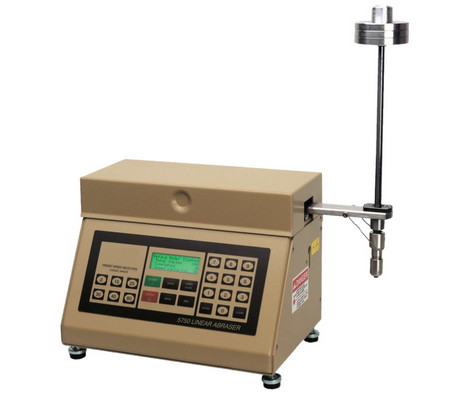- Qinsun Instruments Co., Ltd.
- Tell:+86-21-6780 0179
- Phone:+86-17740808215
- Address:No. 2578 Minhang District Gu Dai Road, Shanghai
- Contact:Mr. Li
- QQ:846490659
Taber Linear Abraser: A Comprehensive Analysis

Introduction
The Taber Linear Abraser is a versatile instrument designed to assess various material properties, including surface roughness and wear resistance. In this comprehensive analysis, we will explore the capabilities of the Taber Linear Abraser in measuring both surface roughness and wear resistance.
Surface Roughness Measurement
Principle
The Taber Linear Abraser utilizes a linear reciprocating motion to subject a test specimen to controlled abrasion. This controlled abrasion allows for the assessment of surface roughness. The instrument is equipped with different abrasive wheels, each designed to simulate specific abrasive conditions. These wheels can range from fine to coarse, enabling users to select the appropriate tool for their surface roughness analysis.
Parameters
To measure surface roughness, the Taber Linear Abraser provides numerical values based on parameters such as Ra (average roughness) and Rz (maximum height of the profile). Users can interpret these values to understand the texture and smoothness of a material's surface.

Wear Resistance Measurement
Principle
The Taber Linear Abraser is also adept at evaluating wear resistance. By subjecting the test specimen to repetitive abrasion cycles, the instrument simulates real-world wear and tear. This allows for a quantitative assessment of a material's ability to withstand abrasion and maintain its structural integrity over time.
Parameters
Wear resistance is often measured in terms of material loss or weight loss after a specified number of abrasion cycles. The Taber Linear Abraser provides accurate data on the wear performance of materials, aiding in the selection of materials for applications where resistance to wear is crucial.
Advantages of Using the Taber Linear Abraser
Versatility: The Taber Linear Abraser offers a wide range of abrasive options, making it adaptable to various testing scenarios and material types.
Quantitative Data: The instrument provides precise numerical data, allowing for objective comparisons between different materials and surface treatments.
Reproducibility: The controlled reciprocating motion ensures consistent testing conditions, enhancing the reproducibility of results.
Realistic Simulation: By simulating abrasive conditions, the Taber Linear Abraser provides insights into how materials perform in real-world scenarios, aiding in the development of more durable and reliable products.
Considerations and Best Practices
Proper Calibration: Regular calibration of the Taber Linear Abraser is essential to maintain accuracy in measurements.
Selection of Abrasive Wheels: Choosing the right abrasive wheel is crucial for obtaining meaningful results. Consider the material composition and intended application when selecting the abrasive tool.
Test Conditions: Ensure that test conditions, such as load and speed, are standardized to facilitate fair comparisons between different materials.
Interpretation of Results: Understand the significance of surface roughness and wear resistance values in the context of the specific application. What might be acceptable for one application may not be suitable for another.
Conclusion
In conclusion, the Taber Linear Abraser is a valuable tool for evaluating both surface roughness and wear resistance. Its versatility, coupled with the ability to provide quantitative data, makes it a preferred choice for researchers and industries aiming to enhance material performance. By considering the principles, parameters, and best practices outlined in this analysis, users can harness the full potential of the Taber Linear Abraser for comprehensive material characterization.





